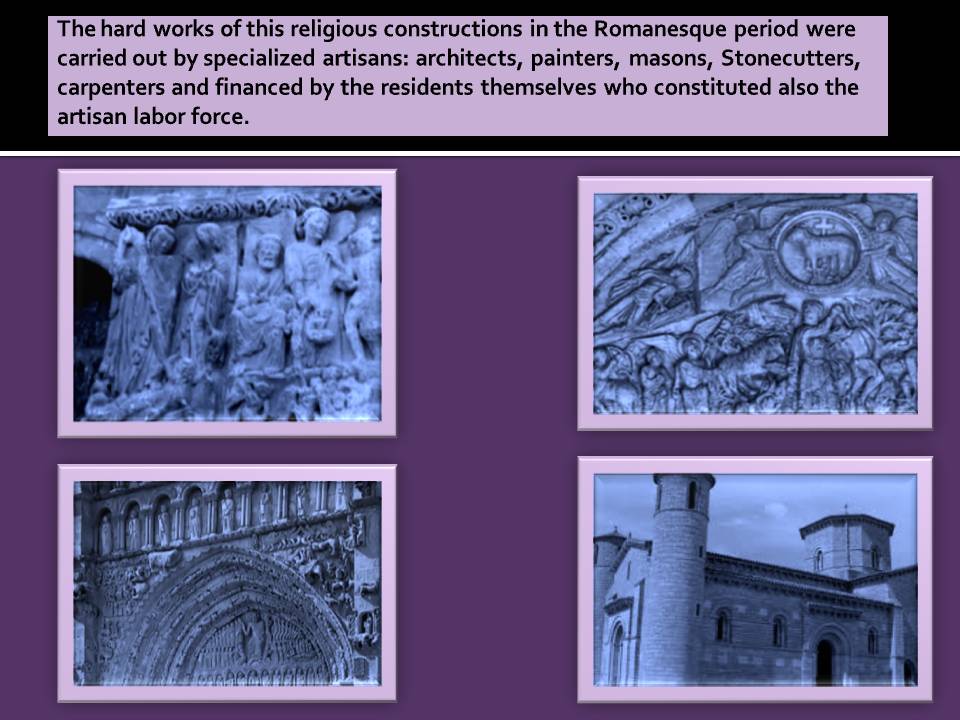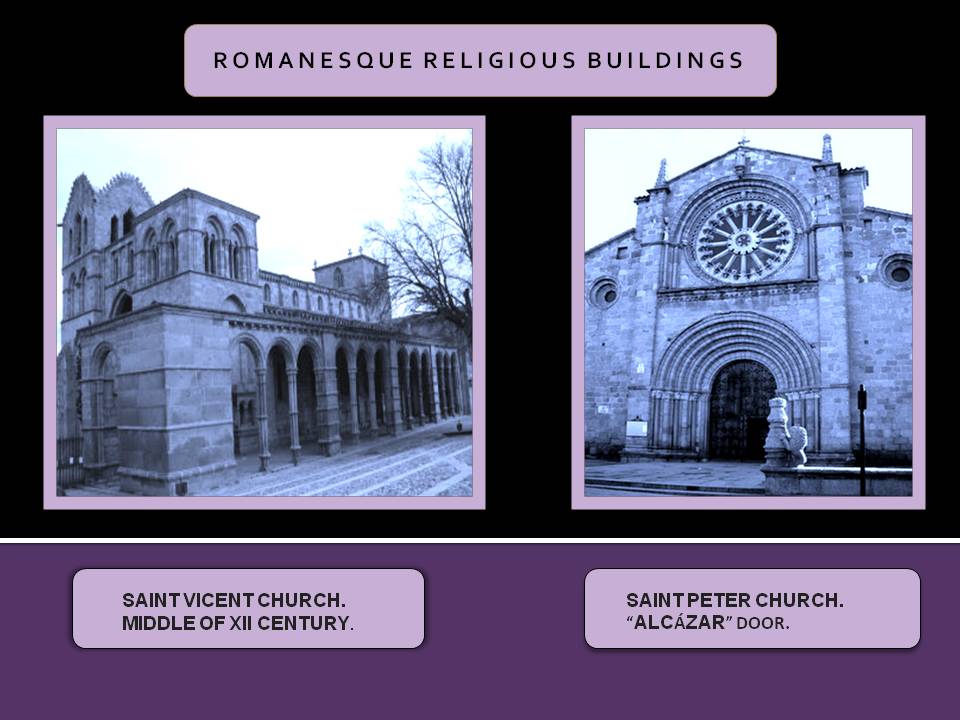Romanesque Art/ Architecture
In Europe in the period that is known as the early Middle Ages was developed between the XI and XII centuries what is known as Romanesque art. It is called Romanesque art because of its similarity with the Romance word. The name comes from its source which is none other than the art of Rome, which provided the main source of inspiration because take from them their construction techniques. During 800 C.E. and under Charlemagne reign Europe began to take its first steps out of the “Dark Ages” since the fall of Rome in the fifth century and began building churches in the Roman style–particularly the style of Christian Rome in the days of Constantine, the first Christian Roman emperor.
Economic aspects that mark a transformation in the spiritual aspect and material prosperity made possible the consolidation in this period of a great boom of religious buildings in response to the needs of the numerous orders that arose; We have an example in the orders of (Cluny and Cistercian). Elements of Roman culture were not the only ones used since there are Germanic and Eastern influences as well according to the region in which these religious centers were located.
Significant Aspects about Romanesque Art
– The art period up to 1000AD is referred to as Pre-Romanesque art and after that date as Romanesque Art.
– Early art subjects were initially limited to the production of Pietistic painting (religious art or Christian art) in the form of illuminated manuscripts, mosaics and fresco paintings in churches.
– There were no portrait paintings in the art of the “Middle Ages”.
– They had to see also the power and influence of each religious order, around which revolved the urban and cultural center of society.
– The main type of buildings is the Church.
This aspect related to the preponderance and influence of each religious order is important since this agglutinating characteristic; endures through the centuries. That magnetic influence of religious power that (it conglomerates constructions of the cities to it’s around); persists in these regions and was also exported to distant regions over time either by conquest or by the mere spread of religious influence as it is the case of pilgrimages.
Romanesque Architecture
The construction of churches responded clearly to the values of the new feudal society and was driven by bishops, Kings, nobles and the Abbots of the monasteries and were erected to ponder religion and fervently serve their purposes of control. Therefore are considering of a monastic creation since are the convents and monasteries the ones to sustain and propels them.
The main building type is the Church as was mentioned before expresses the ideal of austerity and meditation, discipline and penance as well as blind obedience to ecclesiastical theories. From the technical point of view, it belongs to the so called Group of Architectures of Arch and Dome, being these the basic functional elements supporting these huge buildings.
The works were carried out by specialized artisans: architects, painters, masons, Stonecutters, carpenters and financed by the residents themselves who constituted also the artisan hand.
The first buildings were made in Lombardy, Burgundy and Normandy and spread afterwards throughout Europe. Early Romanesque ceilings and roofs were often made of wood until architects figure how to span the two sides of the building using stone.
Among the features that we found in these Romanesque churches are:
– They have a robust and heavy appearance.
– The principle of bearing capacity is static; because it faces mass against weight.
– It presents a sober exterior with bare and smooth walls, interrupted only by elements of reinforcement, which is incorporated to the structure.
– Other construction elements are:
– Buttress; (on the walls to secure vaults).
– Columns wide and strong.
– Canon Vault which can be barrel raced or reinforced with transverse arches or also of edge in the sides aisles.
– Pillars (widths)
– Domes resting on trumps or horns in the area of the cruise (Circular or polygonal).
– The characteristic Arches in the Romanesque are the semicircular with pear form or not.
– Plant; (in the form of a Latin cross).There is also examples of centralized plants either circular or polygonal.
– Abside; semicircular to finish the isles.
– Cruise; they separated the isles where the parishioners of the choir were located.
– The Gyratory went from behind the high altar.
– Vault
– Crypt; to keep the relics of the Saints in the case of some churches.
– Bell Tower; from where was called parishioners to conglomerate.
– Cloister; constituted by a square or rectangular courtyard surrounded by porticoes arcades.
– Cloister with rectangular courtyard.
I recomend to see this video so you can learn to recognice the Romanesque architecture from the Gothic.
Coming soon will be a new post about the scuplture in the Romanesque Art period following by another were the painting in this Romanesque period can be better explained.





